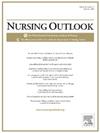新毕业护士能力-第二部分:在新毕业护士雇用和完成12个月护士住院医师计划时,学术教师和急症护理医院实践领导者的看法的专题分析
IF 3.7
2区 医学
Q1 NURSING
引用次数: 0
摘要
获得初级护理学位的各种教育途径促进了多样化的劳动力。然而,他们也造成混乱的实践领导对新毕业的护士(ngn)的能力水平的期望。在开始他们的专业实践时,以及在12个月的护士实习计划(NRP)结束时,对医院实践领导者所期望的所有ngn的基本核心能力建立清晰的理解,无论护理执照前学位课程的类型如何,都将有助于他们的持续成长和发展。这是一篇两部分文章的第二部分,该文章描述了ngn在12个月的专业实践中的实践准备争议和能力。目的:本研究旨在了解护理学术教师和医院实践领导者在其专业护理实践开始时和完成12个月的NRP后对ngn核心能力的看法。方法采用多阶段混合方法(调查和焦点小组)的研究方法,对马里兰州所有经认证的护理学专业的护理学术人员和所有急症护理医院的实践负责人进行有目的的抽样调查。参与者对一项调查的反应进行了分析,以比较不同群体之间的能力期望(第一部分)。本研究的定性研究方面采用了虚拟焦点小组方法,并遵循半结构化访谈指南,以深入了解参与者反应的原因。定性研究结果确定了六个主题,这些主题解释了基于护理学术教师和医院实践领导者的不同看法,现有ngn在开始其专业实践角色时的能力期望。参与者还确定了ngn在为期12个月的NRP结束时可能发展的24项能力。尽管护理学术教师和医院实践领导者对ngn的能力有不同的看法,但本研究提供了一条前进的道路,不再质疑实践准备差距,而是关注每个教师和领导者可以做些什么来支持ngn的持续增长。研究结果支持了这样一种现象,即在为期12个月的NRP中,教师培养ngn的能力,而学生和实践领导者继续培养ngn作为专业护士的能力。本文章由计算机程序翻译,如有差异,请以英文原文为准。
New graduate nurse competencies—Part II: Thematic analysis of the perceptions of academic faculty and acute care hospital practice leaders at the time of new graduate nurse hire and upon completing a 12-month nurse residency program
Background
The various educational pathways to obtain an entry-level nursing degree facilitate a diverse workforce. However, they also create confusion among practice leaders about the competency-level expectations of newly graduated nurses (NGNs). Establishing a clear understanding of the essential core competencies hospital practice leaders can expect of all NGNs, regardless of the type of nursing prelicensure degree program, upon starting their professional practice, and at the end of a 12-month nurse residency program (NRP) will contribute to their ongoing growth and development. This is the second of a two-part article describing the practice readiness controversy and the competencies of NGNs at 12 months of professional practice.
Purpose
This statewide study aimed to understand the perceptions of nursing academic faculty and hospital-based practice leaders of NGNs’ core competencies at the start of their professional nursing practice and after completing a 12-month NRP.
Methods
A multiphase mixed-methods (survey and focus groups) research study was completed using a purposive sample of nursing academic faculty from all accredited prelicensure nursing programs and practice leaders from all acute care hospitals in the state of Maryland. Participants' responses to a survey were analyzed to compare competency expectations between the differing groups (Part One). The qualitative research aspect of this study employed a virtual focus group methodology and followed a semistructured interview guide to gain deeper insights into the reasons for the participants’ responses.
Discussion
The qualitative findings identified six themes that explained the existing NGNs’ competency expectations upon starting their professional practice roles based on the diverse perceptions of nursing academic faculty and hospital-based practice leaders. Participants also identified 24 competencies NGNs may develop by the end of their 12-month NRP.
Conclusion
Although nursing academic faculty and hospital-based practice leaders had different perceptions of NGNs’ competencies, this study provided a path forward to stop questioning the practice readiness gap and instead focus on what each of the faculty and leaders can do to support the continued growth of NGNs. The findings supported the phenomenon that competency-based education occurs as a continuum where faculty develop NGNs’ competencies, while students and practice leaders continue to grow NGNs’ competencies as professional nurses during the 12-month NRP.
求助全文
通过发布文献求助,成功后即可免费获取论文全文。
去求助
来源期刊

Nursing Outlook
医学-护理
CiteScore
6.20
自引率
7.00%
发文量
109
审稿时长
25 days
期刊介绍:
Nursing Outlook, a bimonthly journal, provides innovative ideas for nursing leaders through peer-reviewed articles and timely reports. Each issue examines current issues and trends in nursing practice, education, and research, offering progressive solutions to the challenges facing the profession. Nursing Outlook is the official journal of the American Academy of Nursing and the Council for the Advancement of Nursing Science and supports their mission to serve the public and the nursing profession by advancing health policy and practice through the generation, synthesis, and dissemination of nursing knowledge. The journal is included in MEDLINE, CINAHL and the Journal Citation Reports published by Clarivate Analytics.
 求助内容:
求助内容: 应助结果提醒方式:
应助结果提醒方式:


